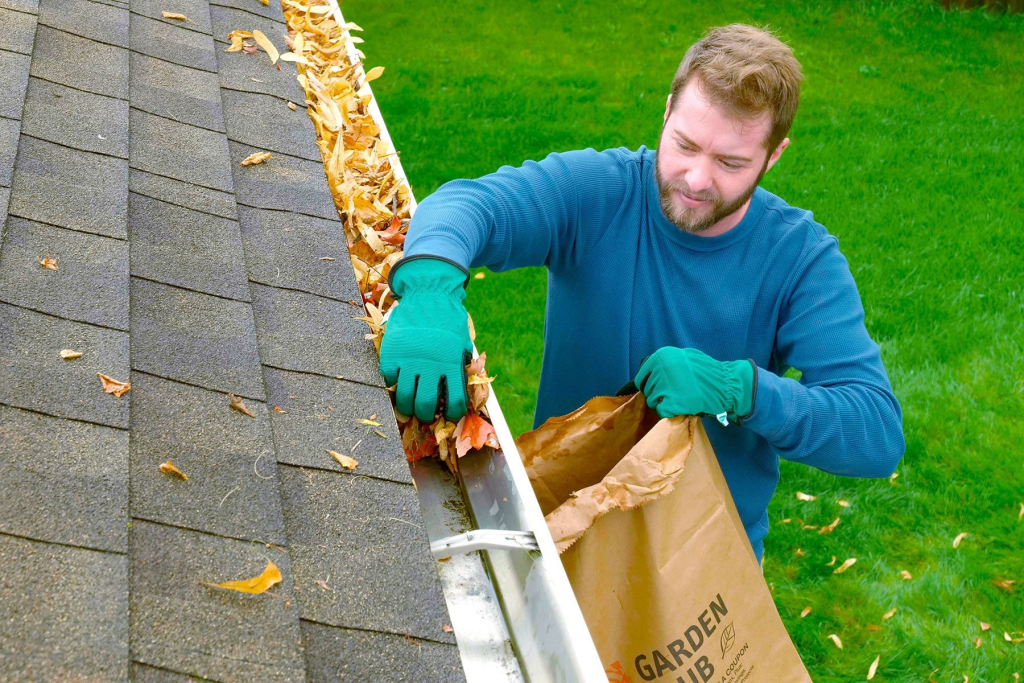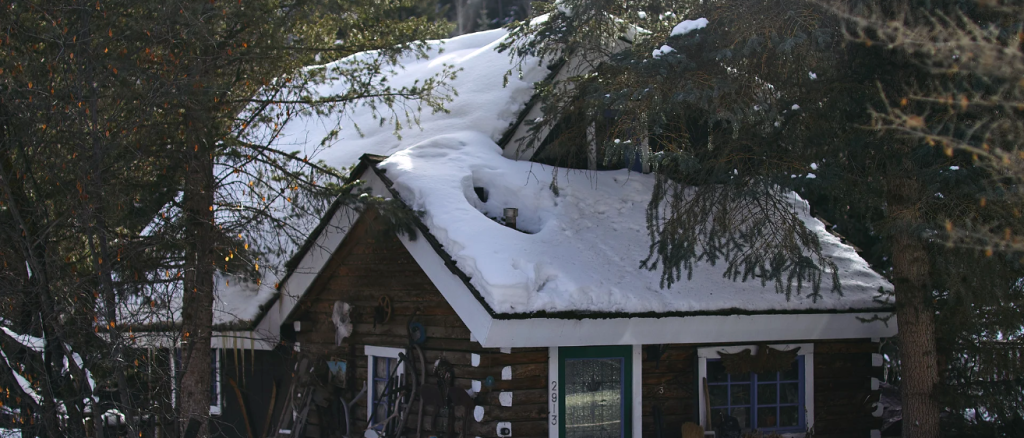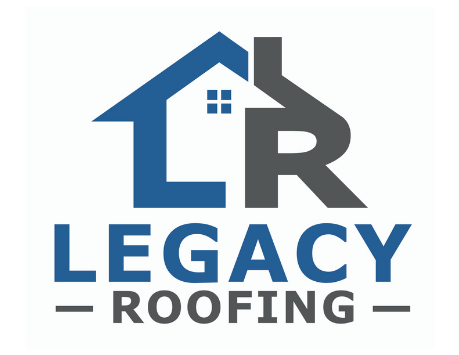Do you want to learn the best maintenance tips for roof longevity?
Like anything, taking care of something increases its lifespan, and a well-maintained roof can last decades if you don’t overlook regular upkeep. Regular inspections, cleaning your gutters, and prompt repairs are key strategies to maximize your roof’s lifespan. Today, we will help you explore how to prevent problems caused by debris, weather, and more so you can prolong your roof’s lifespan!
How to Maximize Your Roof’s Lifespan in 14 Steps
Here are the Legacy Roofing tips for maintaining your roof!
1. Inspect Your Roof Regularly to Identify Issues Early
Regular roof inspections are essential for identifying signs of wear and tear early before bigger problems arise. By utilizing a roof inspection checklist, you can ensure a thorough assessment, and scheduling professional inspections annually can prevent more serious problems. A new roof might be necessary depending on the age of your roof, but regular inspections are where you start!
Here is a quick roof inspection checklist to use:
| Inspection Area | Common Issues | Considerations for Maintenance |
|---|---|---|
| Caulk | Cracking or peeling | Reapply caulk as necessary to prevent leaks |
| Flashing | Rust or damage | Inspect for tight seals to avoid leaks |
| Drainage | Clogs or debris | Clear any blockages to ensure proper water flow |
| Surface | Mildew and moisture | Address any signs promptly to prevent deterioration |
2. Understand the Signs of Wear and Tear
Recognizing the signs of wear and tear on a shingle or metal roof is vital for effective maintenance and extending its lifespan. Homeowners should be alert for issues such as moisture buildup, which can lead to mildew growth, especially after extreme weather events. Regularly checking for damaged waterproofing layers and ensuring that sealant remains intact can significantly prevent further deterioration.
- Look for missing or broken shigles
- Flapping shingles are a sign of damage
- Be observant for moisture and mildew on surfaces.
- Inspect for any signs of damage in the waterproofing.
- Monitor any changes after severe weather conditions.
3. Schedule Professional Inspections Annually
Scheduling professional inspections annually is a key strategy for ensuring effective roof maintenance and prolonging your roof’s lifespan. Your inspection is valuable, but trained experts can identify potential issues that you might overlook, such as hidden leaks or damage caused by leaves and debris. By addressing these concerns promptly through roof repair, you can enhance the efficiency of your roof, ultimately leading to improved energy use and reduced costs over time.
4. Clean Gutters & Remove Debris and Leaves

No matter what, you should clean your gutters every year. In fact, if you live in a heavily wooded area, you must clean your gutters twice a year. Removing debris and leaves is crucial for maintaining optimal water flow on roofs and gutters. Blocked gutters can lead to water accumulation, which may cause roof leaks, moss growth, and structural damage over time. Homeowners and business operators should consider hiring a professional roofer to perform thorough cleanings, especially around chimneys and other roof features, as part of a proactive commercial roof maintenance strategy. These efforts enhance the roof’s durability and contribute to overall home improvement.
5. Clean Your Roof
Appropriate cleaning techniques are essential for maintaining roofs and preserving roofing materials like steel or modified bitumen on flat roofs. Homeowners should consider using a leaf blower to efficiently remove debris from the roof and gutters, ensuring unobstructed water flow and minimizing moisture buildup. Additionally, careful cleaning around skylights can prevent damage and leaks, further extending the roofing system’s lifespan while safeguarding the structure from costly repairs.
Identifying and removing moss, algae, or lichens from a roof is essential for preventing leaks and extending its lifespan. If left untreated, these plant growths can trap moisture and cause significant damage, leading to costly roof replacement when the integrity of the ceiling is compromised. Hiring a softwash company to perform a “Roof Wash” is the best way to keep your roof clean. Be sure NEVER to power wash your shingles!
6. Trim Overhanging Branches to Prevent Damage
In a recent blog post, the team here at Legacy Roofing discussed the importance of tree maintenance and trimming around your home. We cannot emphasize enough how trimming overhanging branches is a critical practice for you to prevent potential roof damage. Limbs can scrape against roofing materials and block sunlight, accumulating moisture that may create a dam effect during heavy rains. Regular inspections of nearby trees and evaluation of their impact on the roof can prevent issues related to the climate and identify dead branches or trees that can fall and damage your roof.
7. Check Your Roof Decking
Along the lines of ensuring branches don’t damage your roof structure, ensuring your roof decking is in good shape is crucial! While it can be hard to spot for the untrained eye, you could have decking issues if you see a visible hole (rare) or sagging portions of your roof. The best way to see if your roof decking needs to be replaced is to go to the attic and observe your roof from the inside out! While rare, extreme roof leaks can damage your roof’s plywood decking!
8. Common Roof Problems That Require Immediate Action

Boise homeowners like you should be vigilant about recognizing common roof problems that could require immediate attention. If not addressed promptly, issues like water leaks, missing shingles, or sagging areas can lead to more extensive repairs. Regular inspections and understanding these warning signs can help maintain a roof’s integrity and extend its lifespan.
| Problem | Symptoms | Recommended Action |
|---|---|---|
| Water Leaks | Stains on ceilings or walls | Inspect the roof for damage and repair any leaks immediately |
| Missing Shingles | Exposed areas on the roof | Replace missing shingles to prevent water infiltration |
| Sagging Roof Areas | Visible dips or uneven sections | Consult a professional for structural evaluation and repairs |
| Moss Growth | Dark patches or growth on shingles | Remove moss promptly to prevent moisture retention and damage |
9. Develop a Repair Timeline Based on Seasonal Changes
Establishing a repair timeline based on seasonal changes allows homeowners to address roofing issues proactively, ultimately extending their roof’s lifespan. For instance, after heavy autumn foliage, it is wise to inspect for debris accumulation and potential water blockages. During the spring, checking for winter damage, such as leaks or loose shingles, ensures timely repairs before the summer rain arrives:
| Season | Key Tasks | Recommended Actions |
|---|---|---|
| Spring | Inspect for winter damage | Repair leaks and replace damaged shingles |
| Summer | Check for heat-related wear | Ensure proper ventilation and inspect sealant |
| Autumn | Remove leaves and debris | Clean gutters and inspect drainage systems |
| Winter | Monitor for ice dams | Ensure insulation is intact to prevent heat loss |
Prompt repairs can keep minor problems from becoming major headaches. To ensure lasting results, the proper coatings and sealants are crucial for protecting what matters.
10. Winterize Your Roof for Cold Weather Conditions
Winterizing your roof is crucial for ensuring it withstands cold weather conditions effectively in the Treasure Valley. Just like ensuring windows and doors are ready for the cold air, the same goes for your roof. One tip is to inspect your roof for any signs of damage, particularly around flashing and seams, as these areas are more susceptible to leaks during winter. Additionally, enhancing insulation in the attic can prevent heat loss and reduce the risk of ice dams forming, which can lead to costly repairs and diminish the roof’s lifespan:
- Inspect for damage around flashing and seams.
- Enhance attic insulation to prevent heat loss.
- Clear gutters and downspouts to ensure proper drainage.
11. Assess Structural Integrity Before Heavy Rainfall or Snow
Assessing the structural integrity of your roof before heavy rainfall or snowfall is never a bad idea. The best tip for Boise area homeowners is to ensure your roof is sound from the inside and outside as winter approaches. The elements will test your roof’s endurance, and the age of your roof will matter. Just monitor problematic areas where leaks can occur for snow or rain accumulation. Be sure to also check the attic from the inside each winter.
12. Roof Ventilation and Roof Durability
Effective ventilation is vital in maintaining roof durability by regulating temperature and moisture levels within the attic space. This balance prevents heat buildup that can warp roofing materials and reduces humidity that can lead to mold and mildew growth. Proper airflow through ventilation systems ensures that roofing systems remain resilient over time, enhancing the roof’s overall lifespan and protecting the home from costly damage.
13. Adjust Maintenance Routines for Different Weather Patterns

Adjusting your maintenance routines according to different weather patterns is essential for maximizing your home’s roof’s lifespan. Don’t let this list of things scare you, but just be sure to consider factors such as increased UV exposure in warmer months, which can lead to material degradation, and heavy rainfall that might cause leaks or water damage. By implementing seasonal maintenance strategies, like applying protective coatings in summer and ensuring proper drainage before winter, individuals can effectively extend the durability of their roofing systems.
| Weather Pattern | Impact on Roof | Recommended Action |
|---|---|---|
| Summer Heat | Increased UV damage and brittleness | Apply reflective coatings and inspect for wear |
| Autumn Rain | Pools of water leading to leaks | Clear gutters and check for water blockages |
| Winter Snow | Ice dams and heavy snow load | Ensure insulation is intact to prevent ice buildup |
| Spring Storms | Wind and debris leading to damage | Inspect for loose shingles and repair them promptly |
14. Recognize When It’s Time for a Roof Replacement
Last but not least, homeowners like you should recognize the signs indicating it’s time for a roof replacement. While roof repair is an ideal solution, some indicators, such as severe shingle curling, significant leaks, or persistent moss growth, clearly signal that your roof may need to be replaced. By acting on these warning signs promptly, you can ensure you maintain your home’s integrity while benefiting from modern roofing technologies that offer improved durability and energy efficiency:
- Severe shingle curling or cracking
- Frequent and significant leaks
- Persistent moss or algae growth
The Verdict –
Don’t let this long list intimidate you. It is actually not that scary. Inspect your roof in the spring and before the winter. When you are outside mowing the grass or enjoying your weekend, now and then just look at your shingles to make sure everything is in order. If you notice a potential issue, schedule a professional roofing company like Legacy Roofing to inspect your roof!
Frequently Asked Questions Regarding Roof Maintenance
This section addresses essential topics to enhance roof longevity. It outlines the key maintenance steps that contribute to a roof’s lifespan, examines how weather conditions influence roof care, and emphasizes necessary safety measures during maintenance. Additionally, it covers the importance of hiring professionals for specific tasks and highlights common mistakes to avoid, offering valuable insights for effective roof maintenance.
1. What Are the Key Maintenance Steps for Roof Lifespan?
Key maintenance steps to maximize a roof’s lifespan include regular inspections, prompt repairs, and maintaining cleanliness. Homeowners should routinely check for signs of wear, such as loose shingles or leaks, and address these issues immediately to avoid further damage. Additionally, keeping gutters and roofs free of debris ensures proper water drainage, which is critical to preventing moisture buildup and structural damage:
- Conduct regular roof inspections.
- Make prompt repairs to address any issues.
- Keep gutters and roofs clean to ensure proper drainage.
2. How Do Weather Conditions Affect Roof Care?
Weather conditions significantly influence roof care, impacting its overall lifespan and performance. Exposure to harsh elements like heavy rain, intense sunlight, and snow can lead to various issues, such as leaks, heat damage, and ice dams. For instance, heavy rainfall may cause water pooling, increasing the risk of leaks, while prolonged UV exposure can deteriorate roofing materials like asphalt shingles. Homeowners should regularly assess their roofs, especially after severe weather, to identify potential damage and proactively implement maintenance strategies to protect their investment.
3. What Safety Measures Should Be Considered While Maintaining a Roof?
When maintaining a roof, safety should be the top priority. Homeowners should use proper fall protection equipment, such as harnesses and guardrails, especially when working on steep or elevated areas. Additionally, ensuring the work area is clear of debris and obstacles minimizes trip hazards, while using ladders that meet safety standards can prevent falls and injuries during inspections or cleanings.
4. When Should You Hire a Professional for Maintenance?
Hiring a professional for roof maintenance should be considered when homeowners encounter issues that exceed their expertise or safety limits. For instance, if there are signs of water leaks, extensive shingle damage, or structural concerns, it is prudent to seek professional assistance to ensure a thorough and safe evaluation. A qualified roofing contractor can provide valuable insights, conduct necessary repairs, and ultimately help maximize the roof’s lifespan by addressing problems before they escalate into costly repairs.
5. What Common Mistakes Should Be Avoided in Roof Care?
Homeowners often make common mistakes that can significantly affect their roof’s lifespan. One frequent error is neglecting routine inspections, which can lead to minor issues escalating into costly repairs. Additionally, using the wrong cleaning techniques, such as abrasive materials, can damage roofing materials, reducing their effectiveness and longevity. By avoiding these pitfalls and implementing proactive maintenance strategies, property owners can ensure their roofs remain in optimal condition over time.


